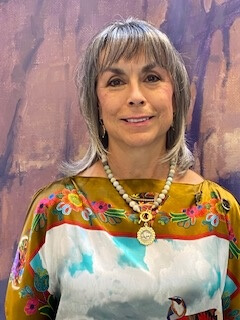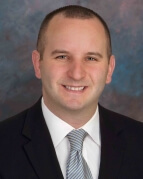
March 22, 2021, is a day Belinda Trevino Scholz will never forget.
“I was outside doing yard work and came inside,” she said. “Suddenly, I got this massive headache on my right side that went from my head to my toes.”
She called a nurse friend who told her to rush to the hospital. Scholz and her husband, Jay, took action and arrived at the Northeast Baptist Hospital emergency room.
“The last thing I remember is handing over my license and insurance card,” she said. “Then I collapsed.”

Scholz had suffered a ruptured brain aneurysm. Her husband was told she had a 20 percent chance of survival.
Scholz had suffered a ruptured brain aneurysm. Her husband was told she had a 20 percent chance of survival.
Two years later, sitting at a coffee shop sipping a cappuccino on a sunny afternoon, the 63-year-old has no lingering effects from the stroke. Scholz said that while participating in rehabilitation, the physical therapist told her after only a few sessions, “we don’t know what to do with you.”
“I didn’t have any problems walking. I didn’t lose my ability to speak. There was nothing wrong with me,” Scholz said.
Had Scholz’s friend not been available to talk when she called, it’s possible her outcome would have been much different, and Scholz knows not everyone is so lucky.
Types and treatment of stroke explained
Justin R. Mascitelli, MD, FAANS, a vascular neurosurgeon with The University of Texas Health Science Center at San Antonio who treated Scholz, said only about one-third of patients who suffer a ruptured brain aneurysm survive and return to their normal life without impairments. Another third is disabled, while the rest don’t survive.

Mascitelli said 70% of all strokes are ischemic, in which a blood clot blocks blood flow to the brain. He said 30% of strokes are hemorrhagic, where there is bleeding on the brain.
“Of those hemorrhagic strokes, a small portion is due to a ruptured aneurysm where a brain blood vessel can have a dilation off the side like a little balloon. And that balloon can pop. That’s what happened to Mrs. Scholz,” he said.
Scholz was initially treated with an endovascular coil, a small coil made of soft platinum shaped like a spring placed in the aneurysm through a catheter in the groin area, Mascitelli said. The coil can be twice the width of a human hair in size.
“That helped to protect the aneurysm from the inside so it didn’t rupture again,” he said.
After Scholz recovered from bleeding on her brain, Mascitelli placed a stent in the blood vessel where the aneurysm formed to divert blood flow away from it.
“That finished off the aneurysm, so it’s completely gone,” he said. “She doesn’t have to worry about it ever again.”
Mascitelli said 25% of patients with an aneurysm can develop another.
“We check all the blood vessels to see if there’s another one, and then we treat any additional aneurysms if needed,” he said.
Sobering statistics and warning signs
According to the Centers for Disease Control and Prevention, each year, close to 800,000 people have a stroke. Most are a first stroke. It is the fifth-leading cause of death and a leading cause of disability. Eighty percent of strokes are preventable, according to the American Stroke Association.
Mascitelli said heart disease, high blood pressure, high cholesterol, diabetes and smoking are the most common risk factors for stroke. Prevention is key, but taking medication to manage any disease will help lower those risks, he said.
Common signs of stroke are numbness or weakness in the face, arm or legs, especially on one side of the body. He said confusion, trouble seeing and walking and a severe headache could be signs of having a stroke.
“One way to remember it is FAST. ‘F’ is for face drooping, ‘A’ is for arm weakness, ‘S’ is for speech difficulty and ‘T’ is for time,” he said.
The key to survival is quick action, Mascitelli said.
“It’s very hard for patients to realize they are having a stroke. It’s different than a heart attack, where you have crushing pain. A patient with a stroke doesn’t realize it,” he said. “It’s important for family, friends or the people around them to recognize the stroke symptoms and get them to medical attention as quickly as possible. The treatments for strokes are all time sensitive.”
Unlike most stroke survivors, Scholz was healthy, with no pre-existing conditions. The only sign was the sudden headache and pain radiating to her toes.
“Had I not called my friend, I would have treated it with Tylenol,” she said. “I just want people to be aware and get help quickly.”

